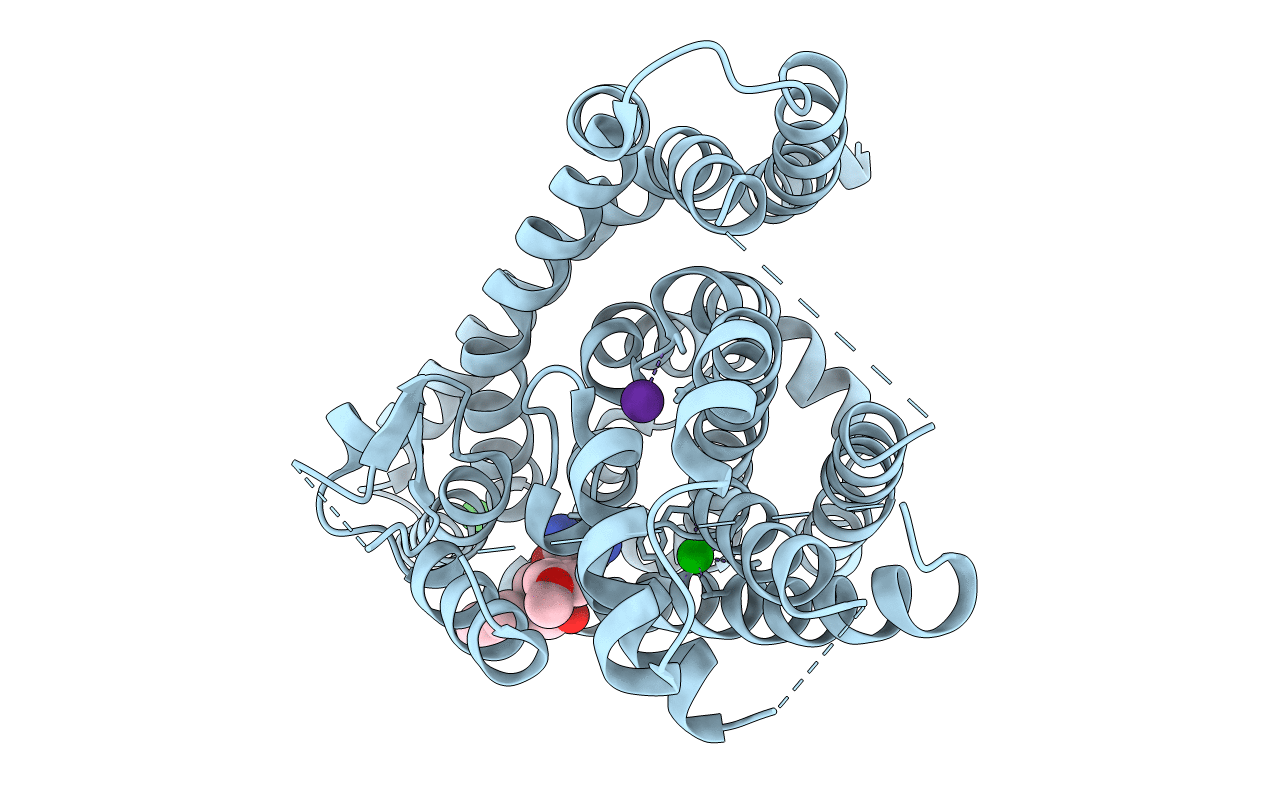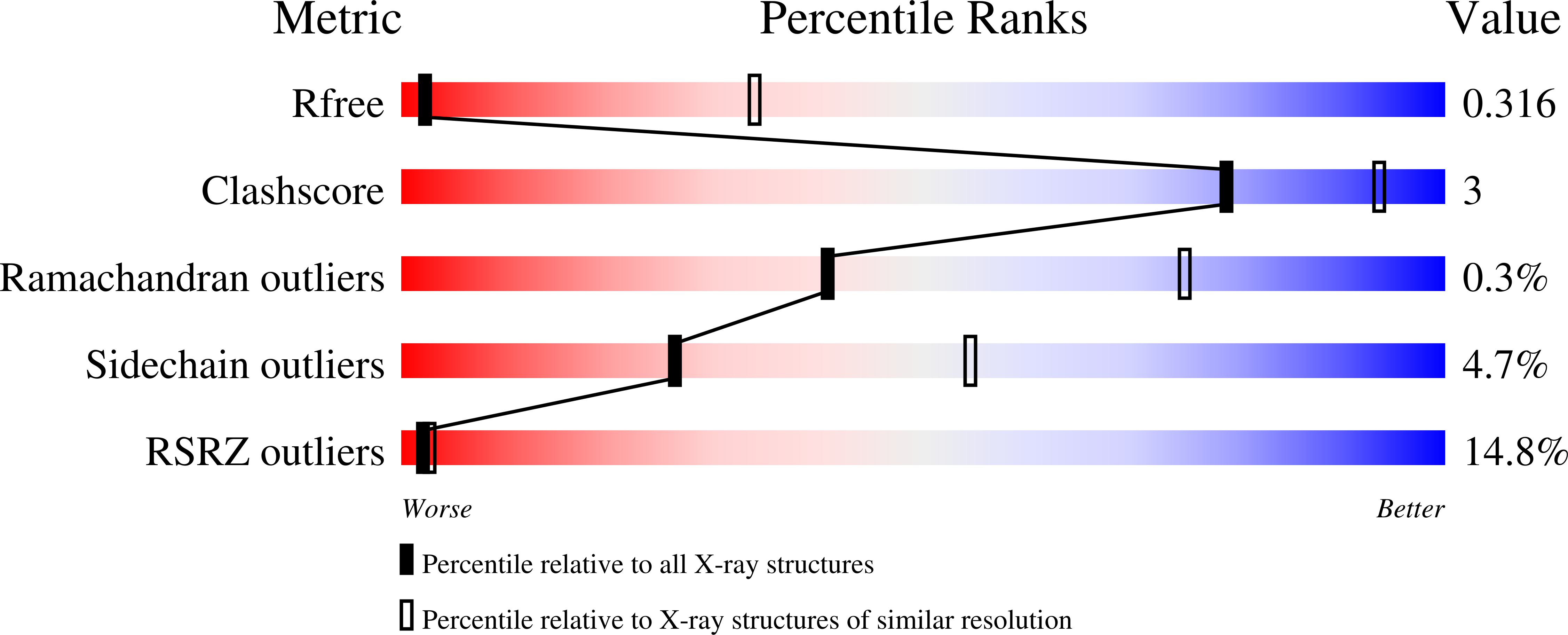
Deposition Date
2020-11-08
Release Date
2021-10-13
Last Version Date
2024-01-31
Entry Detail
PDB ID:
7AWP
Keywords:
Title:
Structure of the thermostabilized EAAT1 cryst-II mutant in complex with rubidium and barium ions and the allosteric inhibitor UCPH101
Biological Source:
Source Organism:
Homo sapiens (Taxon ID: 9606)
Host Organism:
Method Details:
Experimental Method:
Resolution:
3.91 Å
R-Value Free:
0.29
R-Value Work:
0.24
R-Value Observed:
0.24
Space Group:
P 63


